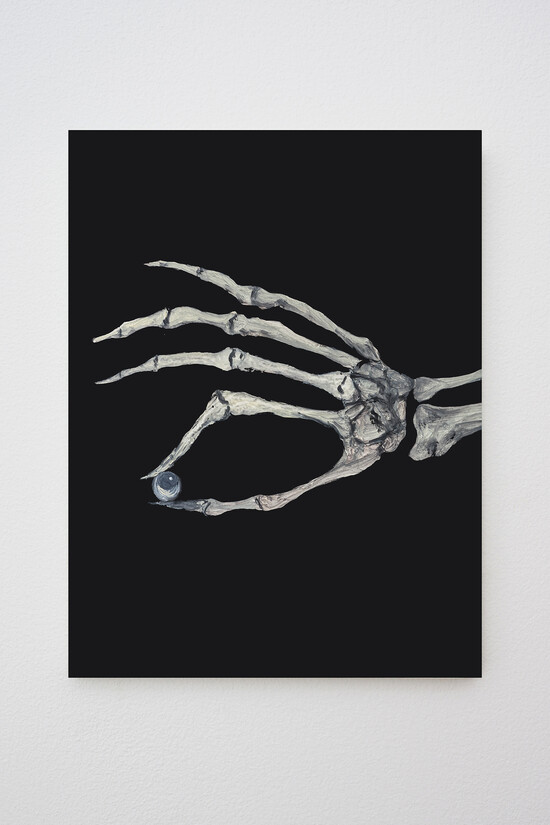Through a reconfiguration of formal languages drawn from an array of visual and literary sources in history, Han Mengyun's paintings reflect a form of translation, between text and image, the depicted and the imagined, the self and the cosmos, the mundane and the spiritual, suffering and emancipation. The pandemic prompted her to look at the meaning of life and death, the eternal themes that character-ize her painting series Jewels of Impermanence. This body of work situates itself on the convergence of Buddhist reflection on impermanence and the 17th century Dutch Vanitas paintings, probing the fragility of life and our existential emptiness. Employing traditional Indian woodblocks for textile-making on to her canvas, Han has turned this craft into a painterly gesture by embracing material incompatibility. Her interest in Islamic illustrated manuscript is reflected in the formal dialogue between the ornamented frame and the subject within. The diptych composition is reminiscent of the book form, inviting one to read an image and see a word. Han's eclectic vocabulary is rooted in the hybridity of her cultural experience and interest in the lineage of art-making in the history beyond borders. Han regards painting in the same way Mallarmé envisions the book, where the world exists and ends.
Detail pictures:




